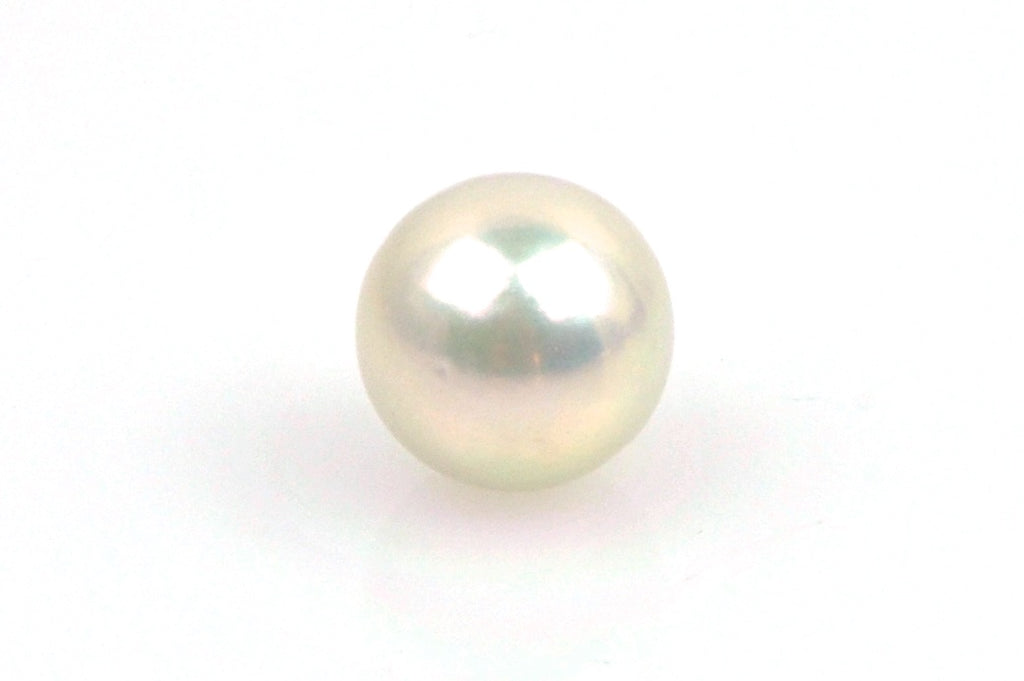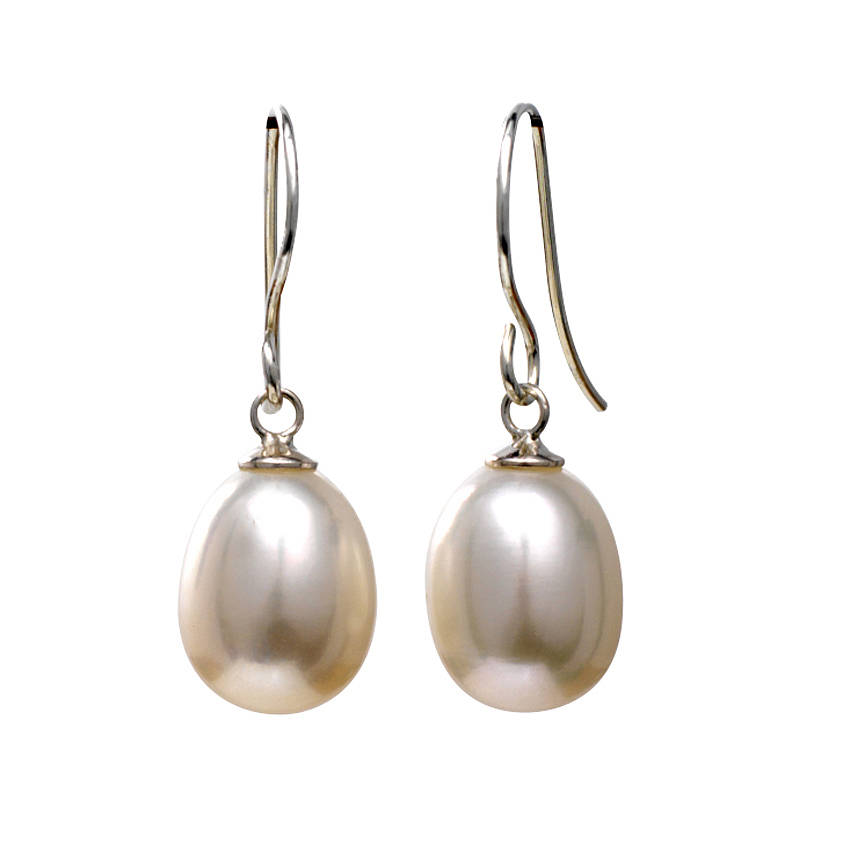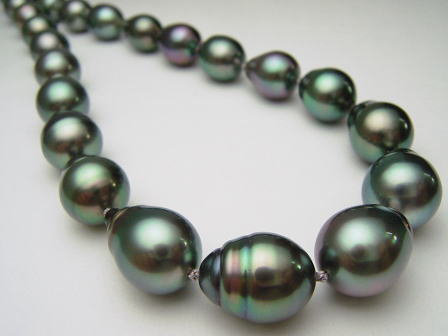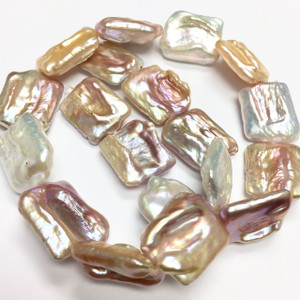The BIWA pearl is quite simply another name used for freshwater pearls. In 1914, pearl farmers began growing cultured freshwater pearls using the pearl-mussels native to Lake Biwa. This lake, the largest and most ancient in Japan, lies near the city of Kyoto.
LUSTER is essentially the reflective quality or brilliance of the surface of the pearl nacre. The more lustrous the pearl, the more it shines and reflects light and images.
NACRE, also known as mother-of-pearl, is a crystalline substance that creates the iridescent visual effect attributed to pearls. Nacre is an organic substance secreted by mollusks over an intruding irritant or implanted nucleus. It is a strong and resilient material that is lightweight and transparent, allowing light to pass through its surface, creating a subtle glow on the pearl’s surface.
Pearls are natural organic substances and can therefore occur in a wide variety of shapes, many of which are quite unique and interesting. Every pearl has a slightly different shape. The eventual shape of the pearl is determined by a number of factors occurring inside the oyster as the pearl is developing. Below is a list of the most commonly used terminologies used to define specific pearl shapes:
 |
Round, Near-round, or Oval (also known as rice pearls) are the shapes most people think of when they think of a pearl. A perfectly round pearl is very rare. |
 |
Button pearls are flattened to some degree, making them resemble a button or perhaps a disk rather than a perfect sphere. |
 |
Potato pearls are roundish pearls with a slightly oblong shape and less-symmetrical curves, resembling more a potato than a sphere. |
 |
Drop pearls are pear or teardrop-shaped. The drop can either be “long” or “short,” depending on its proportions. |
 |
Baroque pearls are non-symmetrical and irregular in shape. The baroque pearl can be purely abstract in its shape, or it can resemble a cross, stick, or some other shape. |

|
Square and Coin pearls are two of the most popular man-induced shapes. Specific pearl shapes are created by implanting a piece of shell material, usually mother-of-pearl, into the host mollusk, which secretes the nacre around the shape. Pearl farmers realized they could use many different shapes to create an almost endless variety of pearls, such as, flower pearls, cross-shaped pearls and, of course, the very popular square and coin pearls. |
 |
Keshi, a Japanese word meaning “poppy”, is used to define pearls that grow without a nucleus; hence, these pearls are composed entirely of nacre and have high luster as a result. Keshi pearls are also known as petal pearls since their shapes emulate flower petals. They are found in both fresh and saltwater. |
 |
Akoya pearls are the specialty of Japanese saltwater pearl farms and hail from the Akoya oyster. The first pearls to be cultured early in the 1920s, their white colour and rosé overtone complement a fair complexion. They epitomize the classic pearl necklace. |
 |
Japan Kasumi pearls are incredibly rare and expensive. Actual Kasumi Pearls come from Lake Kasumi-ga-Ura, Japan but, sadly, pollution in the 1980’s has all but ended production in Lake Kasumi. Currently, there are only 3 pearl producers working hard to bring back Kasumi pearl production in Japan. The good news is that Chinese pearl producers have been busy producing “Kasumi-Like” pearls for those of us wanting a similar-looking pearl. They are quite lovely but, not to be confused with a true Kasumi pearl which can easily fetch $3-4,000 per strand. |
 |
A true black Tahitian pearl is extremely rare, and largely considered one of the most beautiful kinds of pearls in the world. Tahitian pearls have the ability to contain various undertones and overtones of green, pink, blue, silver and yellow. The Tahitian pearl is French Polynesia’s largest export and where they are cultures in the South Pacific’s blue lagoons. |


